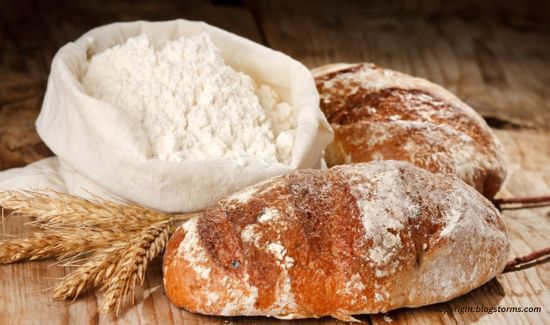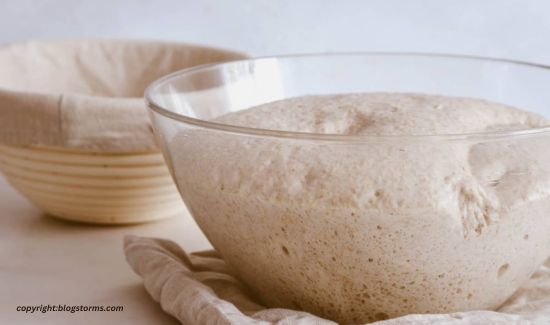Who doesn’t love a perfectly baked pizza with a crispy yet chewy crust? If you’ve ever wondered how to achieve that perfection at home, Pizza Edition in the right place. This guide is your ultimate companion to mastering essential techniques for creating the perfect pizza crust every single time.
Understanding Pizza Dough Basics of Pizza Edition
A great pizza starts with its dough. Understanding the basics of pizza dough is crucial for making a stand-out crust. It’s all about the right mix of ingredients, time, and technique.
Choosing the Right Flour
All-Purpose Flour vs. Bread Flour

The type of flour you use can significantly affect your pizza crust. All-purpose flour is a versatile option that’s easy to work with, but bread flour, with its higher protein content, can create a chewier crust with better gluten development.
Specialty Flours
Speciality flours like 00 flour or whole wheat can offer unique textures and flavours for those looking to experiment. 00 flour, commonly used in Neapolitan pizzas, creates a light, airy crust due to its fine grind.
Hydration Levels
High Hydration Doughs
High hydration doughs (70% water or more) are wetter and can be more challenging to handle, resulting in a more airy and open crumb. This type of dough is perfect for achieving those beautiful, giant bubbles in the crust.
Low Hydration Doughs
Lower hydration doughs (around 60% water) are easier to handle and shape. They tend to produce a denser crust but are great for those just starting.
Importance of Kneading
Hand Kneading Techniques
Kneading by hand allows you to feel the dough’s texture and development. Stretching and folding techniques can help build the dough’s structure, making it strong and elastic.
Using a Stand Mixer
A stand mixer can save time and effort, especially with higher hydration doughs. Use the dough hook attachment and knead quickly until the dough is smooth and elastic.
Fermentation and Proofing
Cold Fermentation

Cold fermentation, where the dough is allowed to rise slowly in the refrigerator, develops deeper flavours and a better texture. The duration of this procedure may span between 24 to 72 hours.
Room Temperature Fermentation
Room-temperature fermentation is faster and can be completed within a few hours. This convenient method may develop less flavour than cold fermentation.
Shaping the Dough
Traditional Hand Stretching
Hand stretching is an art. Use your fingers to press the dough from the centre outward, leaving a thicker edge for the crust. This technique helps retain the dough’s airiness.
Using a Rolling Pin
A rolling pin can make the process quicker and more accessible, especially for beginners. However, it might compress the dough more than hand stretching, resulting in a denser crust.
Choosing the Right Baking Method
Baking Stones and Steel
Baking stones and steel help simulate the high-heat environment of a pizza oven, ensuring a crisp crust. Preheat them in your oven for at least 30 minutes before baking.
Using a Pizza Oven
Whether wood-fired or gas, pizza ovens can reach much higher temperatures than regular home ovens, creating a perfect, crispy crust in just a few minutes.
Temperature Control
High-Temperature Baking
Baking your pizza at a high temperature (500°F or more) ensures a crisp exterior while keeping the inside chewy. It also helps in achieving the characteristic char spots.
Low-Temperature Baking
Baking at a lower temperature (below 450°F) gives you more control and can prevent the crust from burning, but it may produce a less crispy texture.
Common Mistakes to Avoid
Avoiding common mistakes can make a huge difference. Don’t over-knead the dough, use the right amount of flour, and ensure your oven is hot enough before baking.
Advanced Techniques for Perfect Crusts
Incorporating Starters and Poolish
Using a starter or poolish (a pre-fermented dough) can add complexity to the flavour and texture of your crust. These techniques require a bit more planning but are worth the effort.
Autolyse Method
The autolyse method involves mixing the flour and water before adding yeast and salt. This rest period allows the flour to hydrate fully and the gluten to develop, resulting in a more extensible dough.
Enhancing Flavor with Seasonings
Adding Herbs to the Dough
Incorporating herbs like oregano, basil, or garlic powder directly into the dough can add an extra layer of flavour to your crust.
Using Infused Oils
Brushing the dough with infused oils (think garlic or rosemary oil) before baking can elevate the flavour profile of your pizza crust.
Experimenting with Crust Styles
Neapolitan vs. New York Style
Neapolitan pizzas have a thin, tender crust with a puffy edge, baked at high temperatures for a short time. On the other hand, New York style has a thicker, chewier crust that’s great for folding.
Deep Dish and Sicilian Crusts
Deep dish and Sicilian pizzas offer a completely different experience with their thick, buttery crusts. These styles often involve a longer baking time and a different dough preparation method.
Gluten-Free and Alternative Crusts
For those with dietary restrictions, gluten-free and alternative crusts made from cauliflower, chickpea flour, or almond flour can provide a delicious substitute without compromising taste.
FAQs
Q: How do you edit Pizza Hut orders?
Ans: Go to the Pizza Hut website or app, log in, and modify your order under the “Orders” section before it’s confirmed.
Q: Is Stranger Things pizza limited edition?
Ans: Yes, Stranger Things pizza is a limited edition. It’s available for a special promotion and will be around for a while.
Q: Is the Stranger Things pizza limited edition?
Ans: Yes, the Stranger Things pizza is a limited edition. It is only available for a short time during a special promotion.
Q: How to edit house in Work at a Pizza Place?
Ans: To edit your house in the game, work at a Pizza Place on Roblox, go into the game, and then go to your home. Once there, click on the “Build Mode” button to change your house.
Q: How do you edit Pizza Tower files?
Ans: Access the game files on your computer and use a file editor to make changes, but be careful to follow any modding guidelines.
Conclusion
Perfecting your pizza crust is a journey that combines art and science. By understanding the fundamentals and experimenting with different techniques, you can create a pizza that rivals your favourite pizzeria. So roll up your sleeves, get your hands a little floury, and start baking the perfect pizza crust right at home.
